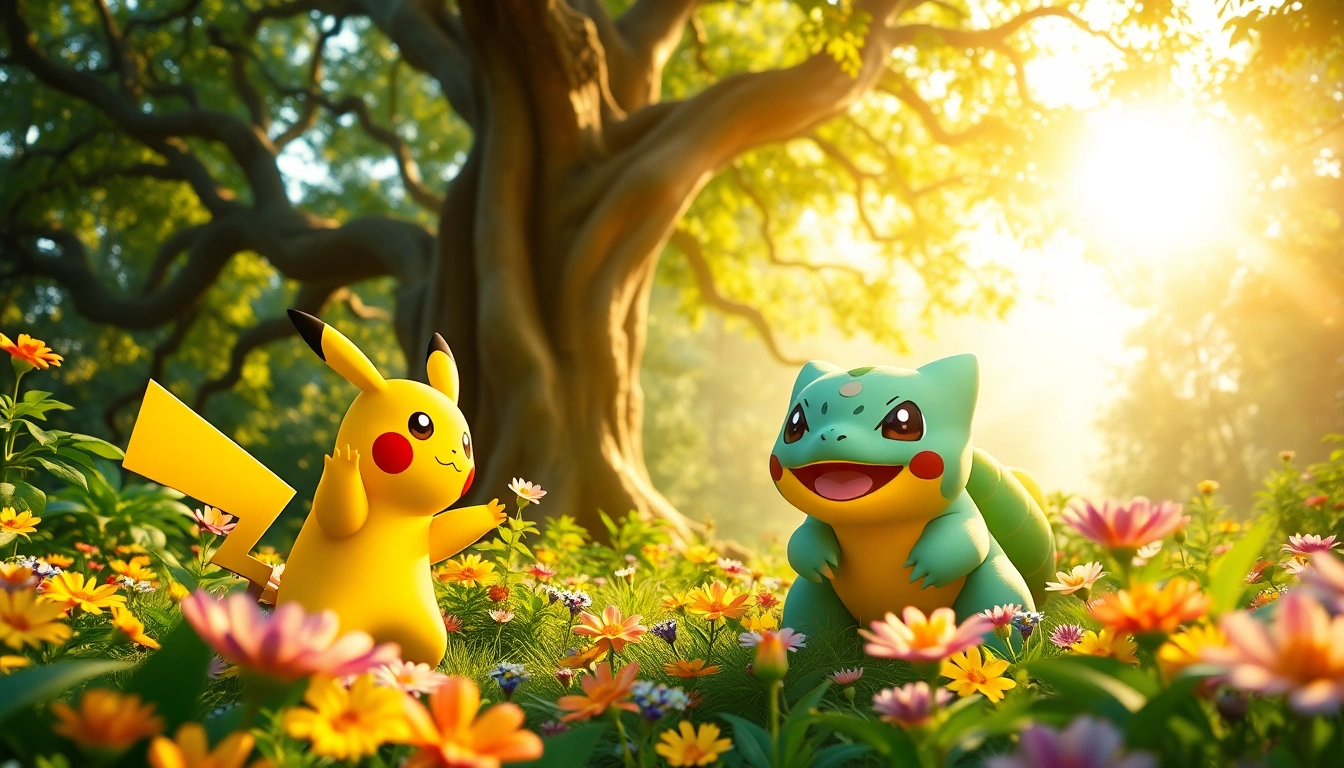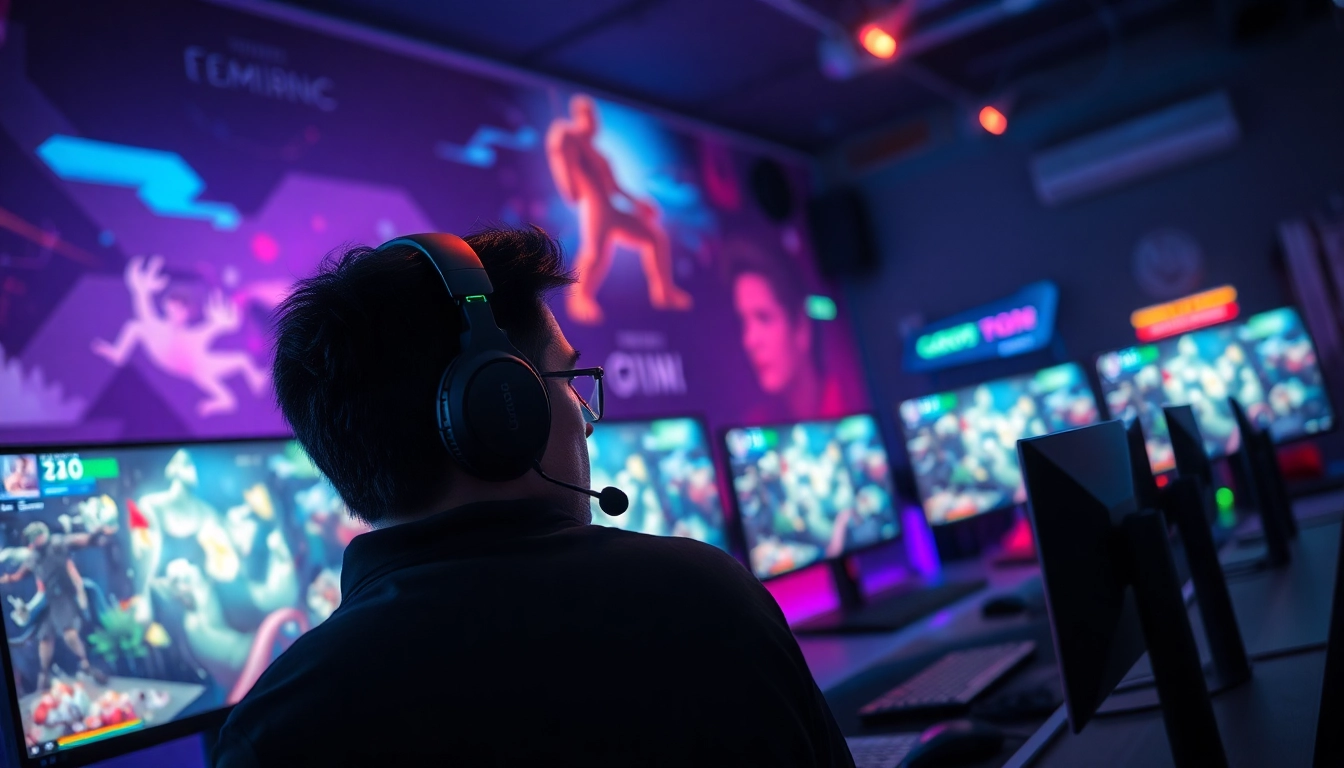Understanding Pokemon: Origins and Evolution
The world of pokemon has captivated millions of fans across the globe since its inception in the mid-1990s. Initially launched as a pair of video games for the Nintendo Game Boy, Pokémon has evolved into a multifaceted franchise encompassing animated series, trading cards, toys, and much more. With a rich history and continuous innovation, Pokémon remains a cultural juggernaut that influences various aspects of entertainment. This article delves into the origins, evolution mechanics, and the various generations of Pokémon, unraveling what makes this franchise so unique and appealing.
The History of Pokémon and its Cultural Impact
Pokémon was created by Satoshi Tajiri and Ken Sugimori and was first introduced by Game Freak and Nintendo with the launch of Pokémon Red and Green in Japan in 1996. The concept of catching, training, and battling creatures resonated deeply with the audience, fueling its rapid popularity. The success of the franchise led to an animated TV series starting in 1997, which followed the adventures of Ash Ketchum and his Pokémon partner, Pikachu. This series played a pivotal role in shaping the cultural landscape of the late 90s and early 2000s, introducing themes of friendship, teamwork, and competition.
Through the years, Pokémon has influenced not only gaming but also merchandise, educational materials, and even aspects of social activities among children and adults alike. Pokémon Go, which launched in 2016, revolutionized mobile gaming by utilizing augmented reality, bringing the franchise back into the spotlight and introducing it to new audiences. The cultural impact of Pokémon is undeniable, having created a lasting legacy and community that thrives through various forms of engagement.
Evolution Mechanics: What Makes Pokémon Unique
One of the most fascinating aspects of Pokémon is the evolution mechanic. Evolution allows a Pokémon to transform into a stronger or different species, a feature that symbolizes growth and development. The evolution process can be triggered in various ways: leveling up, using special items, trading, or even specific conditions like time of day or location.
This mechanic fosters a sense of progression and strategy within gameplay. Players invest time and resources into raising their Pokémon, anticipating the moment of evolution as a reward for their efforts. Moreover, the evolutionary forms often boast enhanced stats and new abilities, making it crucial for trainers to consider their Pokémon’s evolution possibilities in forming a competitive team.
Different Generations: Exploring Character Variations
Since its inception, Pokémon has introduced a myriad of creatures across generations. Each generation typically corresponds to a new game release, expanding the Pokémon universe and introducing new gameplay mechanics. Thus far, there have been eight generations, with over 900 Pokémon, each exhibiting unique designs, types, and abilities.
Generations allow for a rich variety of character development, from the original 151 Pokémon to the complex designs seen in later generations. While primarily aimed at younger audiences, many nostalgic players find joy in revisiting the Pokémon from their childhood while also exploring the newcomers that each generation introduces.
Popular Pokémon and Their Traits
As the franchise has grown, certain Pokémon have achieved iconic status, becoming symbols of both the franchise and the gaming community. This section highlights some of these beloved creatures and explores their unique traits and characteristics.
Highlighting Iconic Pokémon: Pikachu, Charizard, and More
Pikachu is arguably the face of Pokémon. Introduced in the original games, its electric abilities, cute design, and significant role in the anime series have made it a favorite among fans of all ages. Charizard, a fire and flying-type Pokémon, gained popularity due to its powerful appearance and abilities, representing the hype around Pokémon battles and evolution.
Other popular Pokémon, such as Eevee, Kadabra, and Mewtwo, also have long-lasting impacts, each contributing to various storylines, gameplay strategies, and community engagement. Their unique traits and abilities make them essential picks for trainers looking to create formidable teams or simply express their personal style.
Unique Abilities and Characteristics of Pokémon
Each Pokémon possesses unique abilities that define their role in battles and interactions. Abilities, which are inherent traits of Pokémon, can dramatically change the flow of a match. For instance, Pokémon with the ability ‘Levitate’ are immune to ground-type moves, providing strategic advantages. Moreover, some Pokémon have signature moves that reflect their character traits or lore, such as Lucario’s ‘Aura Sphere’ or Gengar’s ‘Shadow Ball.’
Understanding abilities becomes crucial for competitive play and team building, as trainers must synergize their Pokémon’s strengths while covering weaknesses. This depth of strategy adds an extra layer of enjoyment to the game, enticing players to experiment with various team compositions.
Types of Pokémon: Fire, Water, Grass, and Beyond
Pokémon are categorized into various types, including Fire, Water, Grass, Electric, Psychic, and many more. Each type has strengths and weaknesses against other types, creating a rock-paper-scissors dynamic that necessitates strategic thinking during battles. For example, Water-type Pokémon are strong against Fire-types but weak against Electric-types.
With 18 types in total, the classification system provides a diverse battlefield and promotes player engagement. This type mechanic enriches team-building strategies, as trainers must balance their Pokémon’s types to counter different opponents effectively. Seasoned trainers carefully select diverse teams to ensure they can combat any potential threat during battles.
Strategies for Pokémon Training and Battling
Effective training and battling are vital components of the Pokémon experience. Understanding the nuances of team dynamics and individual Pokémon characteristics will help trainers develop powerful teams capable of achieving success in the Pokémon universe.
Building a Strong Team: Tips for Success
Creating a robust Pokémon team involves several factors. First, trainers should identify their preferred battling style—whether it be offensive, defensive, or balanced—and select Pokémon that fit this strategy. Incorporating a mix of types can provide versatility and coverage against a wide range of opponents.
Additionally, trainers should consider the synergy between team members. Pokémon that complement each other’s skills can create effective combinations. For example, pairing a Pokémon with strong attacking moves with one that supports with healing or stat-boosting abilities can turn the tide in tense battles. Moreover, investing in training efforts like EV (Effort Value) training and proper move sets can further enhance a team’s performance.
Advanced Battle Tactics: Strategies for Competitive Play
For those looking to delve into competitive play, understanding advanced tactics becomes essential. Utilizing tactics such as predicting enemy moves and exploiting weaknesses can significantly enhance a trainer’s success rate. An important strategy is to read the opponent’s moves, which entails anticipating the type of Pokémon they use to counter one’s own team.
Moreover, learning how to manage status conditions (like paralysis or burn) and the effects of weather conditions can give seasoned trainers an edge. Creating a balanced strategy that considers both offensive and defensive play styles allows trainers to adapt seamlessly during battles. Practice and experimentation with various tactics can prepare players for unexpected challenges in competitive environments.
Using Items and Moves Effectively
Items play a crucial role in Pokémon battles, ranging from healing items to battle-enhancing gear. Trainers should familiarize themselves with the various items available, such as potions, status healers, and competitive items like Choice Band or Focus Sash, which can alter the performance of their Pokémon significantly.
Additionally, selecting moves wisely is pivotal for success. Each Pokémon has a finite number of move slots, necessitating careful consideration of which moves to keep. Moves that inflict status effects, provide support, or deal high damage are essential to a well-rounded battle strategy. Trainers should stay informed about the meta to adapt their move choices based on prevalent trends and adjust strategies accordingly.
Community and Social Aspects of Pokémon
The Pokémon community is a vibrant tapestry of players, fan fiction writers, artists, and strategists. This section explores the social aspects of Pokémon, highlighting how camaraderie and competitive spirit shape the Pokémon experience.
Joining Pokémon Communities and Sharing Experiences
With the advent of social media and online forums, connecting with fellow Pokémon enthusiasts has never been easier. Platforms like Reddit, Discord, and dedicated forums allow trainers to share their experiences, advice, and strategies. These communities foster discussions regarding game mechanics, trading opportunities, and competitive events, enhancing the overall Pokémon journey.
Moreover, participating in community events, from local meetups to online tournaments, can deepen one’s engagement with the franchise. Sharing in collective experiences and insights from fellow trainers can provide new perspectives and enhance one’s understanding of gameplay dynamics.
Pokémon Tournaments: Participating and Winning
Tournaments are a staple in the Pokémon community, offering a platform for trainers to showcase their skills and strategies. Competitive events range from local tournaments to international championships, often broadcasted for fans worldwide. Entering these tournaments requires adequate preparation, including team building, practice battles, and studying opponent strategies.
Moreover, tournament play fosters a sense of community and camaraderie among participants. Engaging in friendly competition can lead to lasting friendships and shared interests in the franchise. Aspiring champions often learn from their experiences, continuously adapting strategies to succeed in future events.
The Role of Trading in the Pokémon Ecosystem
Trading is an integral part of the Pokémon experience, facilitating the exchange of Pokémon and resources. Players often engage in trading to complete their Pokédex, acquiring rare species or those that can only evolve through trade, such as Machoke or Alakazam.
Online platforms and local events have created a robust trading environment where trainers can find specific Pokémon to enhance their teams. Building relationships through trading can also open doors to future collaborations, be it in battles or community initiatives, further enriching the social aspect of Pokémon.
The Future of Pokémon: Trends and Innovations
As Pokémon continues to evolve, new trends and innovations shape its future. This section looks at potential developments, upcoming releases, and how technology continues to influence the Pokémon experience.
Upcoming Releases and Game Updates
The Pokémon Company consistently seeks to innovate within the franchise, with regular updates and new game releases. Each generation typically introduces new Pokémon, regions, and game mechanics, keeping the gameplay fresh and engaging for existing fans while attracting newcomers.
Planned releases also tend to include remakes of classic games, revitalizing nostalgia and encouraging players to revisit previous adventures with updated graphics and mechanics. Future announcements are eagerly anticipated, keeping the community engaged and involved with ongoing developments within the franchise.
Expanding the Pokémon Universe: New Media and Collaborations
The Pokémon universe extends beyond video games into animated series, movies, comics, merchandise, and collaborations with various brands. With each new initiative, Pokémon expands its reach, attracting diverse audience segments and fostering brand loyalty. The ongoing success of Pokémon animated series, including Pokémon Journeys and movie releases, continues to present rich narratives and introduce new characters.
Collaborative ventures, whether with other gaming franchises or lifestyle brands, have the potential to create innovative crossovers. These ventures allow Pokémon to remain relevant by tapping into contemporary trends and interests, significantly expanding its cultural presence.
Technological Advancements in Pokémon Gaming
Technological advancements play a significant role in Pokémon’s evolution. The introduction of mobile gaming platforms and AR features, exemplified by Pokémon Go, revolutionizes how players interact with their Pokémon. Enhanced graphics, improved AI, and immersive environments have redefined gameplay experiences, providing players with dynamic opportunities for exploration and engagement.
Future developments in virtual reality and AI will likely lead to even deeper, more immersive gameplay experiences. As technology continues to advance, so too will Pokémon, ensuring the franchise remains at the forefront of the gaming world, adapting to the interests and needs of its dedicated player base.



